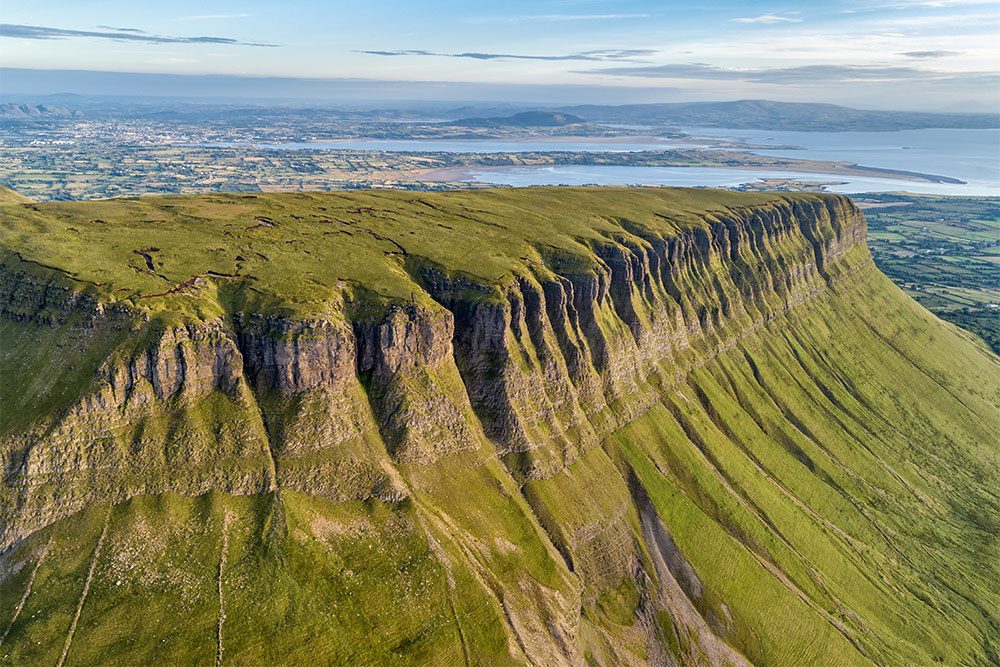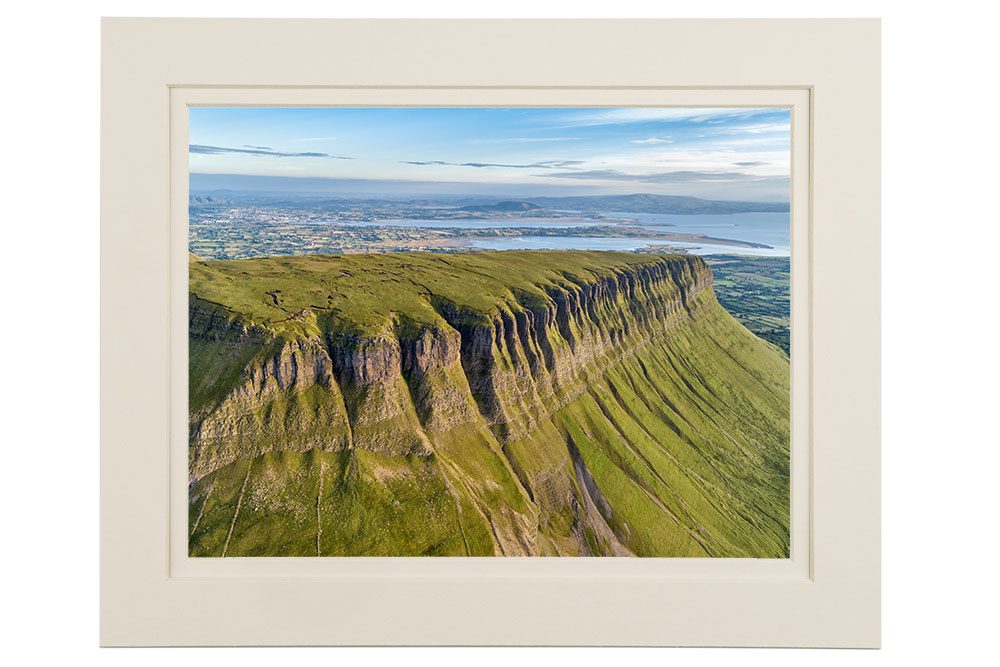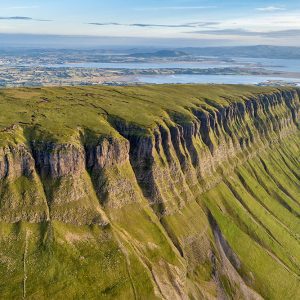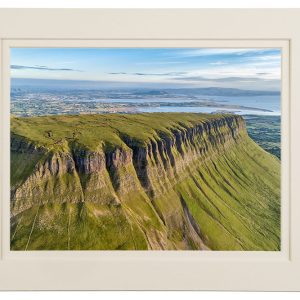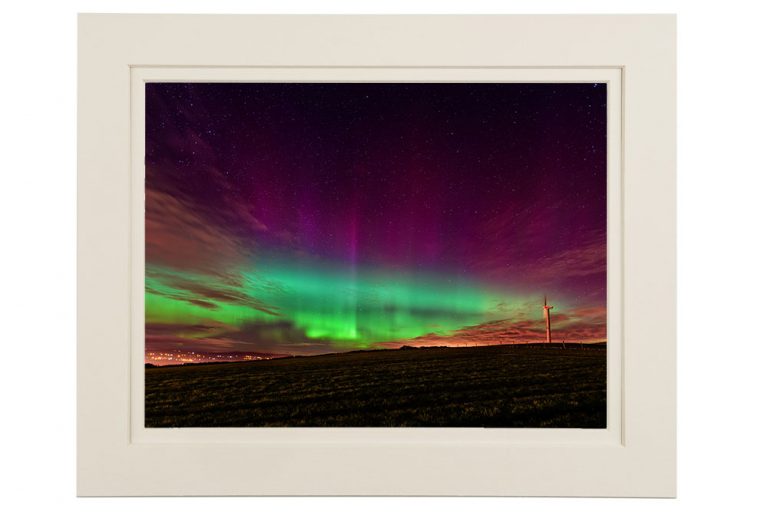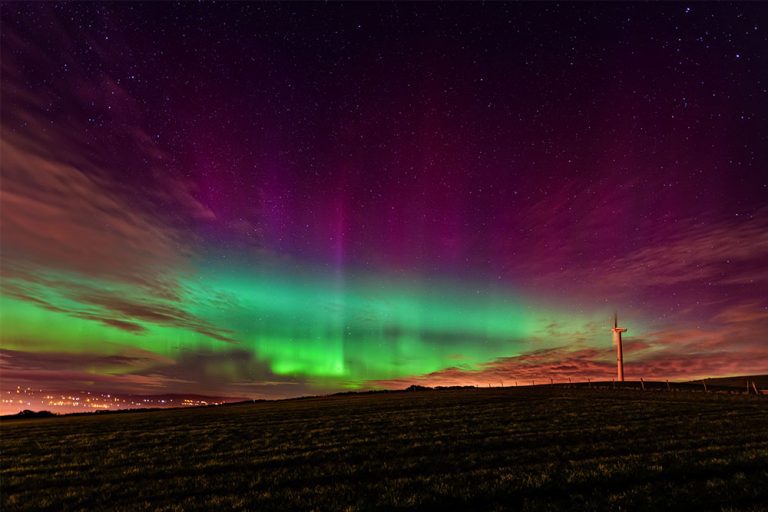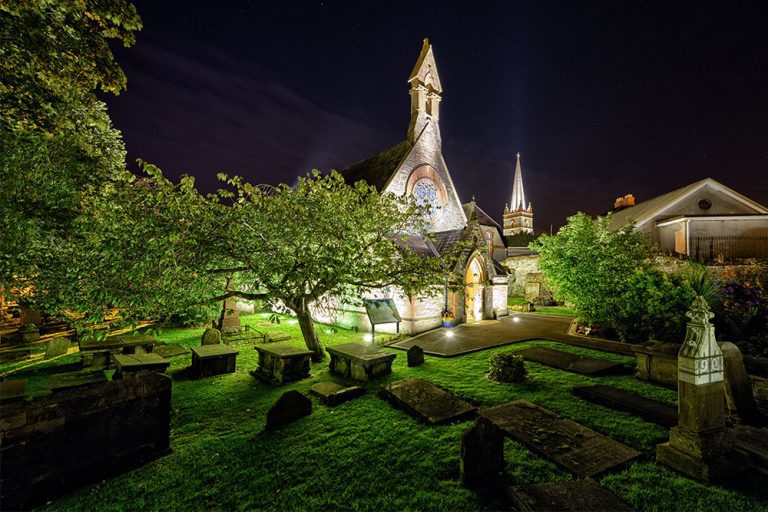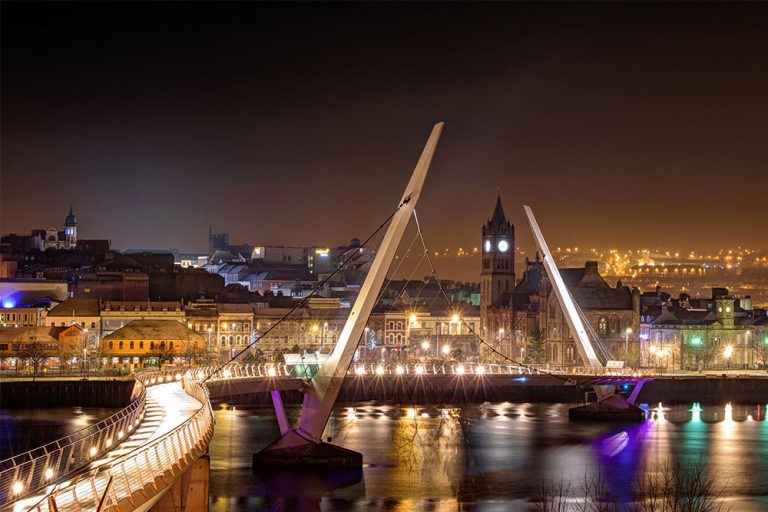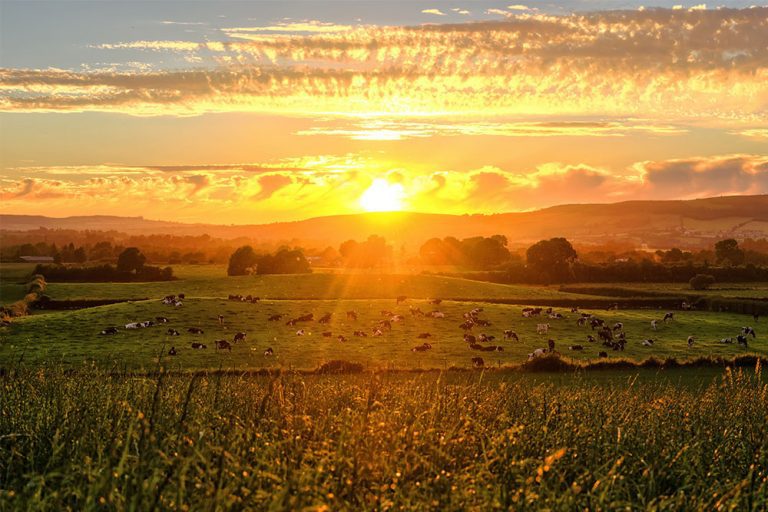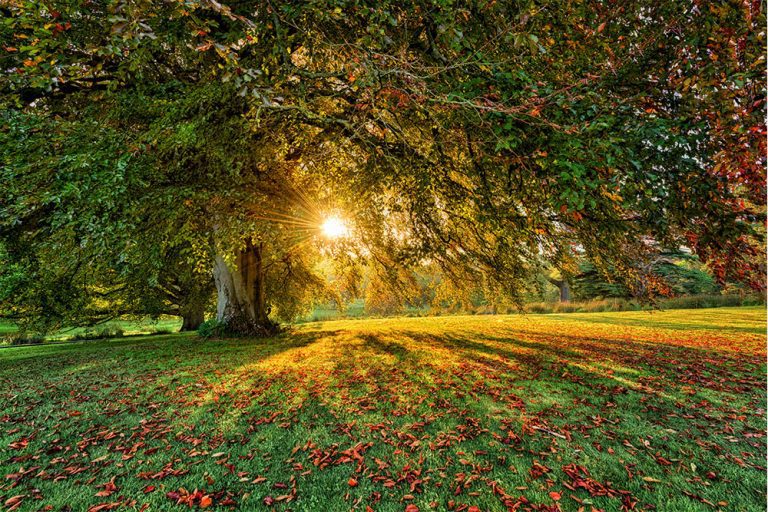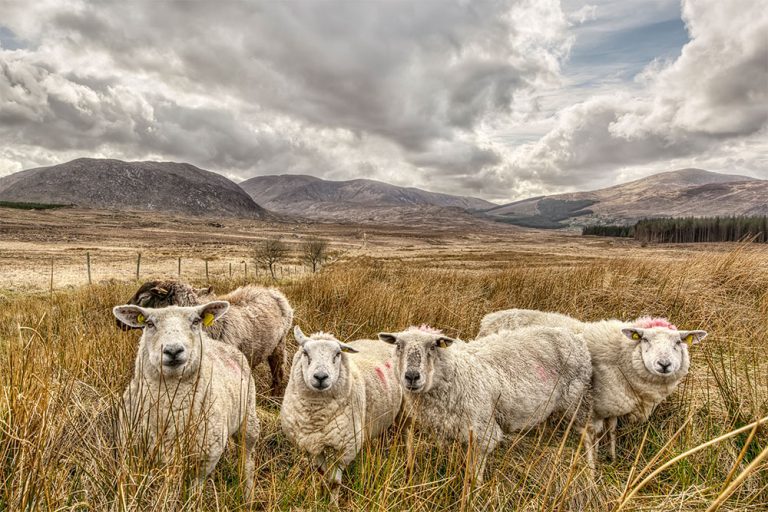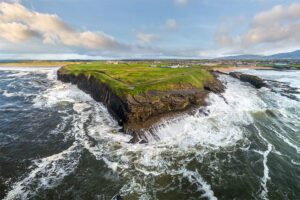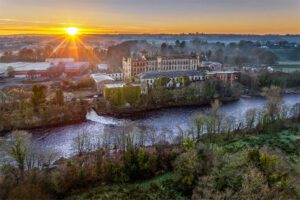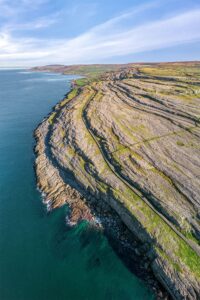Description
Yeats Country, County Sligo, Ireland
Proudly seated on Sligo’s Wild Atlantic Way stands Benbulben mountain also known as “Table Mountain” It is very iconic & is a true symbol of County Sligo. As hard to believe as it may seem, but this mountaintop was once a prehistoric seabed! You can clearly see the many layers of sediment that was deposited on this once sea floor which in return created this mountain entirely made from the bones & shells of tiny extinct sea creatures. Then over millions of years earths tectonic forces slowly pushed it 526 meters into the air. Even today you can find sea shells & marine fossils on top of this mountain! It is also very possible there are remains of giant sharks & whales on this mountain top….. Just let that one sink into your mind for a moment ![]()
![]()
During the last Ice age geomorphological processes began to shape this impressive plateau. Water & Ice began creeping through the cracks in the rock & the underlying shale was eventually eroded by the movement of the ice above. The shale then eroded faster than the limestone above causing these slopes to become steeper and left large overhangs of limestone at the top of the valleys. As the ice began to recede, support for the slopes failed and the land began to slip into the valleys below. It just shows how much our planet changes through time…
I cant tell you how many times I’ve visited Benbulben to achieve a clear view of the distance but each time the harsh Ultra Violet rays from the sun were too strong & I always ended up with washed out colours with barely any recognisable draw distance. Yesterday evening I decided to visit late in the eve right before sunset hoping that the suns rays would be weaker so there would be less UV. It worked & I got my first clear aerial image of the iconic Benbulben with its surrounding lands.
If you look to the distant left you will see Sligo City, to the right can be seen Rosses Point, Knocknarea & Strandhill

